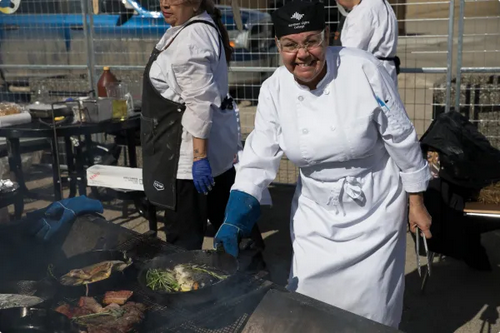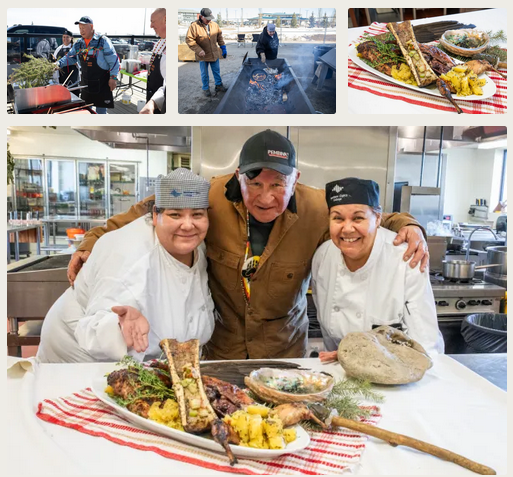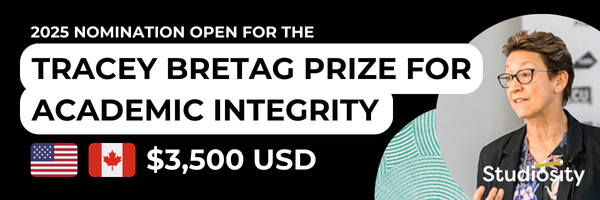
NLC was asked to run a pilot program for an Indigenous cohort that would be the equivalent of Professional Cook Level 1. The first of its kind in the province, it met all the Skilled Trades BC requirements for that credential and included other elements that made it a unique experience. Led by instructor, Chef Michael French, the group not only learned how to work in the kitchen, but also learned about themselves.
Five students completed the program Brianna Wolf, Leslie Munch, Carol Paynter, Anita Larocque, and Monique Roy. They learned not only the basics of preparing food and working in a kitchen, but the traditional ways of knowing and being from Elders within the region, the traditional ways of cooking food over a fire pit, and how it all ties back to themselves as Indigenous individuals.

"The Elders carry doctoral level of knowledge of history and traditional ways of harvesting and hunting; so, they may not have parchment, but they have all that life experience that they bring," said Chef French. "We're really, really honored and blessed to have them come in and share that freely with the students. And I think that for the elders, it was a real passion."
During classroom time, the students took in teachings from a rotating group of Elders who all had different knowledge to share. They discussed the medicine wheel and its importance in daily life, healing foods, foraging, as well as the different traditions and ways of being that each band follows.
NLC had to get special permission to have an open pit fire for the students to cook on. The group cooked rabbit, elk, moose, and trout in different ways over the fire, along with root vegetables and bannock.
Cree Metis Elder Malcolm Supernault was on hand to share his knowledge, and included teachings about plants and animals that can be used for food and medicine, preparation of these plants and animals, and the natural seven-year cycle of the food chain. He acknowledged the importance of sharing these traditions with the students.
"It was an honor. That kind of knowledge is something that is not going to be around for a long time." said Malcolm. He noted that time is the enemy of any knowledge sharing.
What started off as just the Indigenous cohort' grew into something greater; they decided to name their group the Rising Bears to symbolize the strength they found within themselves.

One student, Carol Paynter who lives in Fort St. John and whose roots are Metis and Cree from the Flying Dust First Nation in Saskatchewan said she didn't know much about her own culture before signing up for the cohort. Through the teachings from the Elders and interacting with her fellow students, she found she was able to open up a lot more after going through the program.
"When we first started, we'd have circle and pass the talking stick around, and I couldn't do it for the longest time because it would just make me cry," she said. "But now, I can hold it. I can hold myself up higher and better. I really appreciate myself. And I know I can love myself."
Watching the students evolve throughout the program was great to see, said Malcom.
"I've seen such a difference. They feel so good about themselves. And how they're accepted in this program, all the people here are so accepting," he said.

After only three months in the NLC kitchen, the five students planned an Elders appreciation feast, with a menu that represented everything they had learned. The meal consisted of elk pemmican; baked and friend Bannock; saskatoon compote, smoked trout with lemon and sage salsa; three sisters coleslaw salad; rabbit stew with saskatoon and juniper berries; roasted elk ribs with wild rice pilaf; potato salad with wild herbs; and pan-fried moose steak with onions. Dessert was saskatoon rhubarb ice cream, maple walnut ice cream, and apple crumble.
Safe to say, no one left hungry.
The Rising Bears also presented Elders, instructors, and colleagues with gifts of appreciation for their support throughout their time at NLC.
Carol has found that she is already using what she's learned at home, both in preparation and in practice.
"You have the sage. You got the sweet grass. You got things that you never even think of using and yeah, that was really brought into the training and was kind of neat, too," she said.
She plans to take what she's learned and apply it to the food truck her husband bought her a couple of years ago so she can share her food with the community.
To learn more about this program, visit the Professional Cook 1 page.














